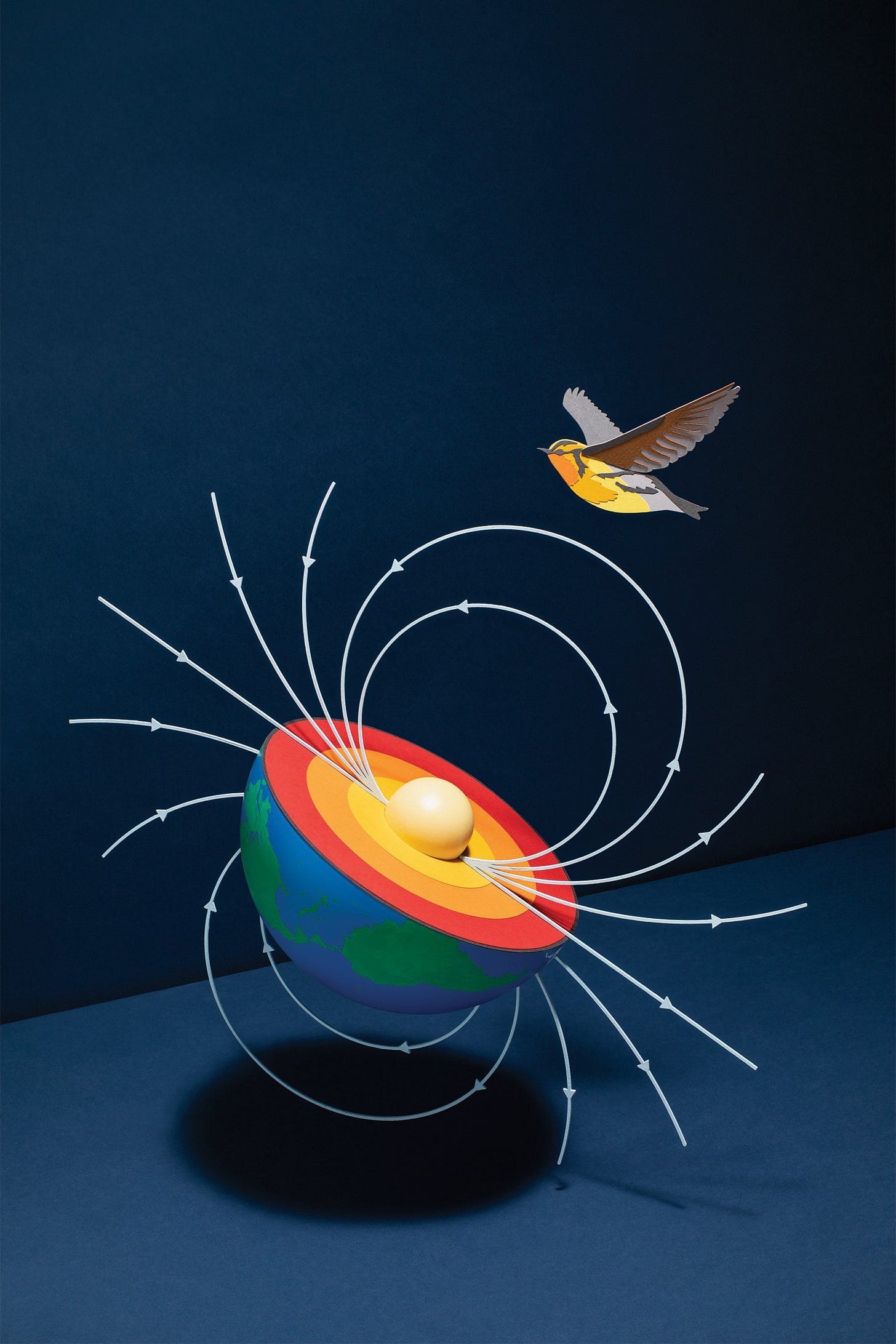Quantum Computing and Avian Navigation by Modeling Magnetoreception in Birds
Written by Azzy Xiang
Magnetoreception?
Birds can navigate thousands of miles with pinpoint accuracy, often relying on Earth’s magnetic field like an invisible GPS. This trait, known as magnetoreception, has many unknown workings behind it.
We’ve guessed about the functionality behind it, like iron-rich cells in beaks and light-sensitive proteins in eyes, but none fully explain the precision and speed of this. Quantum computing is now emerging to model how birds might "see" magnetic fields at the quantum level.
The “Quantum Compass” Hypothesis
There’s a possibility that birds navigate using quantum entanglement, where particles become interconnected across distances, reacting instantaneously to changes in their environment. In birds, cryptochrome proteins in their eyes may host pairs of entangled electrons that respond to Earth’s magnetic field. When light hits these proteins, it could create radical pairs whose quantum states shift depending on magnetic intensity and direction. (For the people who took AP Chemistry or a similar class in high school, radical pairs are molecules with unpaired electrons.)
This quantum compass would allow birds to perceive magnetic fields as visual patterns or even as a "heads-up display" overlaid on their vision. Quantum computers, which operate on the same principles of superposition and entanglement, are uniquely suited to simulate this process.
Unlike classical computers, they can model the simultaneous states of entangled particles, like how fleeting quantum reactions in cryptochrome proteins might translate into navigational data. Early simulations on quantum processors like IBM’s and Google’s have already replicated simplified versions of this system.
Traditional supercomputers struggle to model quantum biological processes because they must simulate quantum states sequentially, requiring impossible amounts of time and memory. For example, modeling just 50 entangled electrons would demand more classical bits than there are atoms in the known universe.
Quantum computers, however, can natively mimic quantum systems, making them the only viable tool to explore hypotheses like the radical pair mechanism. Researchers at the University of Oldenburg used quantum algorithms to demonstrate how Earth’s weak magnetic field of 50 microteslas could alter the spin states of electrons in cryptochrome, which further suggests birds exploit quantum physics for navigation.
If birds can indeed harness quantum effects in normal conditions, it could help us invent ultra-sensitive navigation systems for drones or submarines, use new contrast agents for medical imaging machines based on radical pair dynamics, and invent strategies to maintain quantum coherence in noisy environments, as birds seemingly do.
The European Quantum Flagship program has already funded projects exploring these intersections, with how European robins navigate already being a case study. This is part of a broader effort to understand quantum phenomena in various applications.
Duh, there’s gonna be a catch
Evidently, quantum models face many hurdles, despite being innovative. Biological systems are messy, with noise and decoherence that quantum computers struggle to replicate. There’s also a lot of contention over whether cryptochrome proteins are sensitive enough to detect Earth’s magnetic field without other mechanisms like magnetite crystals assisting.
Most importantly, if we work on quantum technology based on real living creatures, could our electromagnetic pollution disrupt birds’ navigation? Maybe not. Disruptions like solar storms and urban noise could be simulated with the tech to help protect species in our cluttered and polluted world.
Sources:
How Migrating Birds Use Quantum Effects to Navigate | Scientific American
Birds Are Real, and So Is Quantum Physics | MIT Admissions
Quantum Computers and Birds — Chicago Ornithological Society
Written by Azzy Xiang from MEDILOQUY


